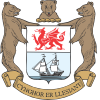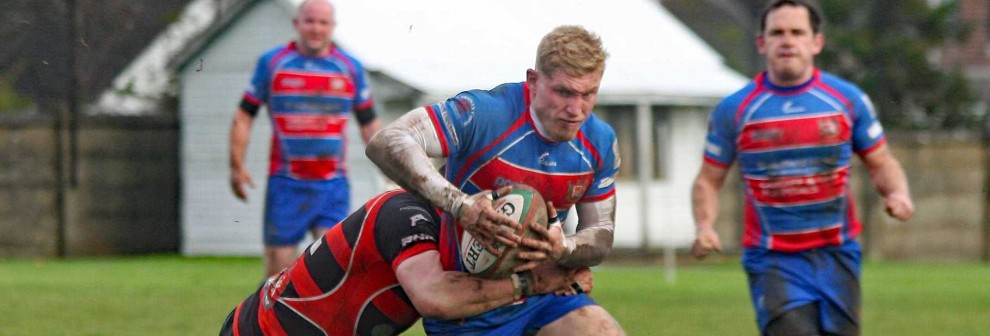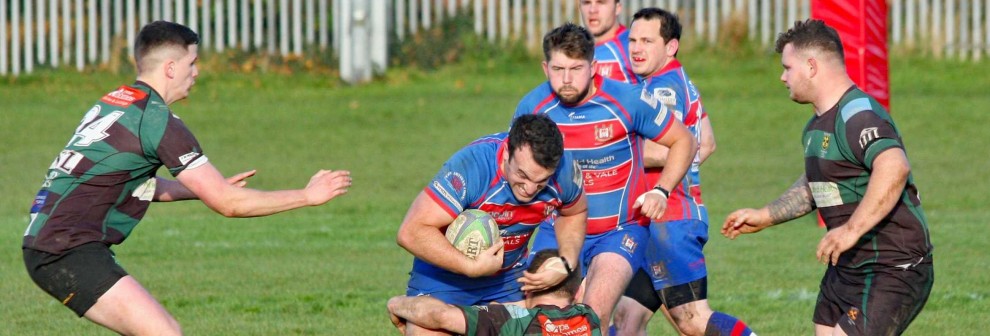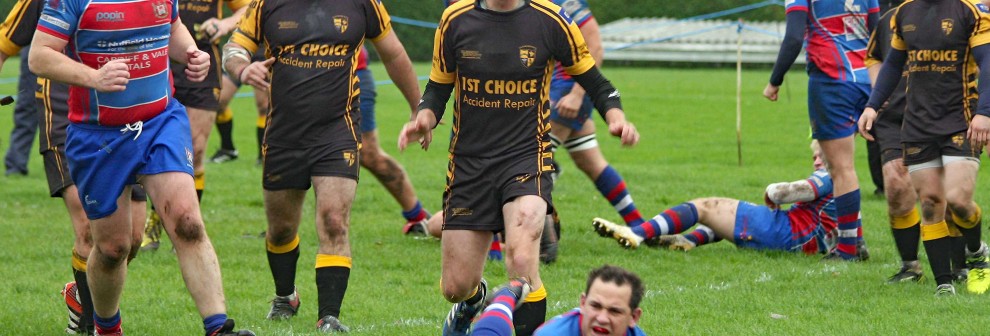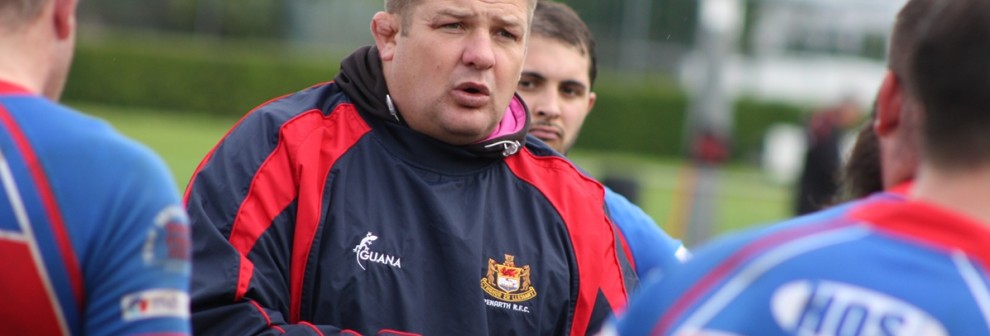The usual November rugby muddle, when the international match schedule plays havoc with the domestic leagues programme, has forced Penarth RFC postpone its weekend fixture against Llantwit Fardre, though the Seasiders had previously agreed with the valley club to bring the kick off time forward to 11 am. A subsequent message from Llantwit, informed Penarth that they were unable to raise a side for an early kick off asking for a postponement. There was little Penarth could do, as a letter from the WRU had already advised the clubs that given the early start of the match Wales v Georgia (ko 2.30 pm), if they were unable to reach agreement on a mutually convenient kick off time, they could reschedule the match for the end of the season in April.
This was something Penarth, who had hit form some three weeks ago, winning two out of three, was trying to avoid, especially against the struggling Llantwit, but based on the WRU ruling, the Rhondda club prevailed and the match was postponed. Consequently, the carefully laid plans of Head Coach Matt Bolton for the week had gone to waste as Penarth have been left to entertain Abrecynon at the Athletic Field, in the 11th round of the League on the 9th of December. Only two of the six East Central Division Two weekly fixtures were fulfilled last Saturday, with Cilnfynydd and St Peters’ defeating Gilfach Goch and Bary respectively. As a result Cilfynydd, beaten by Penarth on October 21st , are now top of the table with 32 points while St Peter’s are eighth with 18 points.
Before resuming the League action on the 9th of December Penarth, who are 10th in the Table with 12 points, are hosting arch-rivals St Peters in the quarterfinal round of the Mallett Cup, this Thursday November 23rd at the Athletic Field (kick off 19.15). There are two additional second division sides in the cup competition, Clwb Rygby CC and Llanishen RFC, as well as two first division regulars, Cardiff Metropolitan University and Glamorgan Wanderers. The Cardiff and District competition is the oldest cup in Wales and will celebrate its 125 anniversary next year. The first Mallett Cup final was played in 1894, with Cardiff Reserves, featuring the 19-year old Gwyn Nicholls, entertaining Canton RFC.
It would also be nice if the great Billy Boston could be enticed down from Wigan to watch his former club.
Boston began with CIAC and became the greatest Welsh wing in rugby history – albeit at League, but he once said to me at the Millennium Stadium: “I’d have given my arm to win just one Union cap for Wales.”
echo.sport@mediawales.co.uk
Wattie Davies later joined Cardiff and then Batley, where he had a long and distinguished career in the Northern Union. The following season, Gwyn Nicholls – arguably the greatest player of the era – represented the District against Gloucester. The District XV also met Cardiff in 1893-4 at the Arms Park in the first of a series of annual encounters which continued until the mid nineteen-sixties, though the fixture was revived in 2012-13.The District were comfortably defeated in their first representative match with Cardiff, but the press reported that such was the quality of the opposition that Cardiff needn’t look beyond the District for new recruits in future. This perhaps was confirmed the next season when the District XV recorded victories over both the Bristol and Gloucester clubs. By September 1896, the press noted that at least twelve Cardiff players had previously played for Cardiff and District clubs and, within a decade, over a dozen Welsh internationals had done so too.
However, a primary objective of the founders of the Cardiff and District Rugby Union was to establish a competitive structure for member clubs and this was addressed in their second season. The Union had by then changed their meeting-place to the Blue Bell (now the Goat Major) in High Street, evidently because the licensee of the Market Hotel had moved there. That licensee was a certain Tom Mallett who, in November 1893, repaid the Union for their loyalty by presenting a twenty guinea (£21) silver cup for competition amongst affiliated clubs at a special ceremony at the Blue Bell. The Union immediately set about organising a knock-out tournament involving fifteen teams. The final was contested in April 1894 at the Harlequins Ground, where Cardiff Reserves, aided by Gwyn Nicholls, defeated Canton 8-0. The Mallett Cup was clearly an immediate success with both players and supporters. In earlier rounds, the Cardiff Reserves v Llandaff match drew 2,000 spectators to the Arms Park while 500 watched Cardiff Hornets beat Blackweir. Perhaps not surprisingly, a few months after the first final, Tom Mallett was elected President. The lasting appeal of the cup which bears his name is demonstrated by its having been held every season – the war years apart – ever since. The other teams which competed in the inaugural Mallett Cup were Barry, Pentyrch and Whitchurch (who along with Canton and Llandaff, 117 years later, all featured in the draw for the 2010-11 competition), while the Cardiff Northern, Cathays, Garth, Grange Stars, Grangetown and Splott Crusaders clubs all subsequently disbanded.
During the next decade, District competitions proliferated. The season after the first Mallett Cup was held, a trophy for the less powerful clubs in the District was inaugurated. The Union Shield, however, was evidently not quite as splendid a trophy as the Mallett Cup. Made by a committee-man, it cost a mere 45 pence. This situation would change, however, when it was later replaced by the Ninian Stuart Cup. For the seasons 1894-5 and 1895-6, it was decided that both the Mallett Cup and the Union Shield would be competed for on a league basis but, from 1896-7, they reverted permanently to a knock-out format. Separate First and Second Division Leagues were resumed in 1897-8, a Third (age restricted) Division was added in 1899-1900 and a Fourth Division six years later. Two other knock-out cups, catering for age-restricted teams, were introduced in 1902-3 and 1905-6.
From 1897-8 onwards, the finals of the cup competitions were always held at the Arms Park and they immediately became a popular climax to the local rugby calendar. These games were often fiercely competitive and were not always attractive to watch. The long-serving District official, A. H. Williams, had a regular column in the local press and on one occasion he sarcastically wrote, “There is a story of a man going to watch a Mallett Cup final expecting to see Rugby played, but it is too far-fetched to be true.” The physicality of the play sometimes spilled over to the spectators, and for some crucial matches, the District found it necessary to engage police officers to control the behaviour of the supporters. Nevertheless, apart from being invited to join Cardiff and going on to play for Wales, winning a Mallett Cup medal quickly became the height of any local player’s ambition.
Teams from Canton were amongst the most successful Mallett Cup sides in the years 1894-1914. Cardiff Romilly were remarkably dominant between 1901 and 1909 when they won the cup five times and were runners-up twice. During that period, they became the first club to win the trophy three times in succession. Canton RFC recorded two wins and were runners-up on six occasions, while Canton Wanderers also won twice and were beaten finalists twice. The only other club to win the Mallett Cup more than once before the First World War were Roath-based Mackintosh, who were successful three times and they also reached the final on two other occasions. It was a very different story in the Union Shield/Ninian Stuart Cup, however, where no club won the tournament more than once during the period. Unfortunately, the records for the league competitions are incomplete, but Canton seem to have been the most consistent league side, taking the title on at least four occasions between 1902 and 1907. In 1907, they became the first team to win both league and cup in the same season. The leagues and the Mallett Cup are today sponsored by Brains; and Chris and Charles Brain are Patron and Vice-Patron respectively. However, the family connection goes back to the very early days of the Cardiff and District Union, as Councillor S.A. Brain was elected President for a period during the 1890s.
As has been seen, the WRU had not been keen to admit too many local clubs, but it is a measure of how successful the fledgling District Union had become that only a few years after its formation it was actually invited to affiliate to the national Union. In 1898, the District became the first organisation of its kind to become a WRU member. This was a clever move by the WRU because all of Cardiff and District’s clubs were now brought under its jurisdiction without admitting any of them to full membership.
